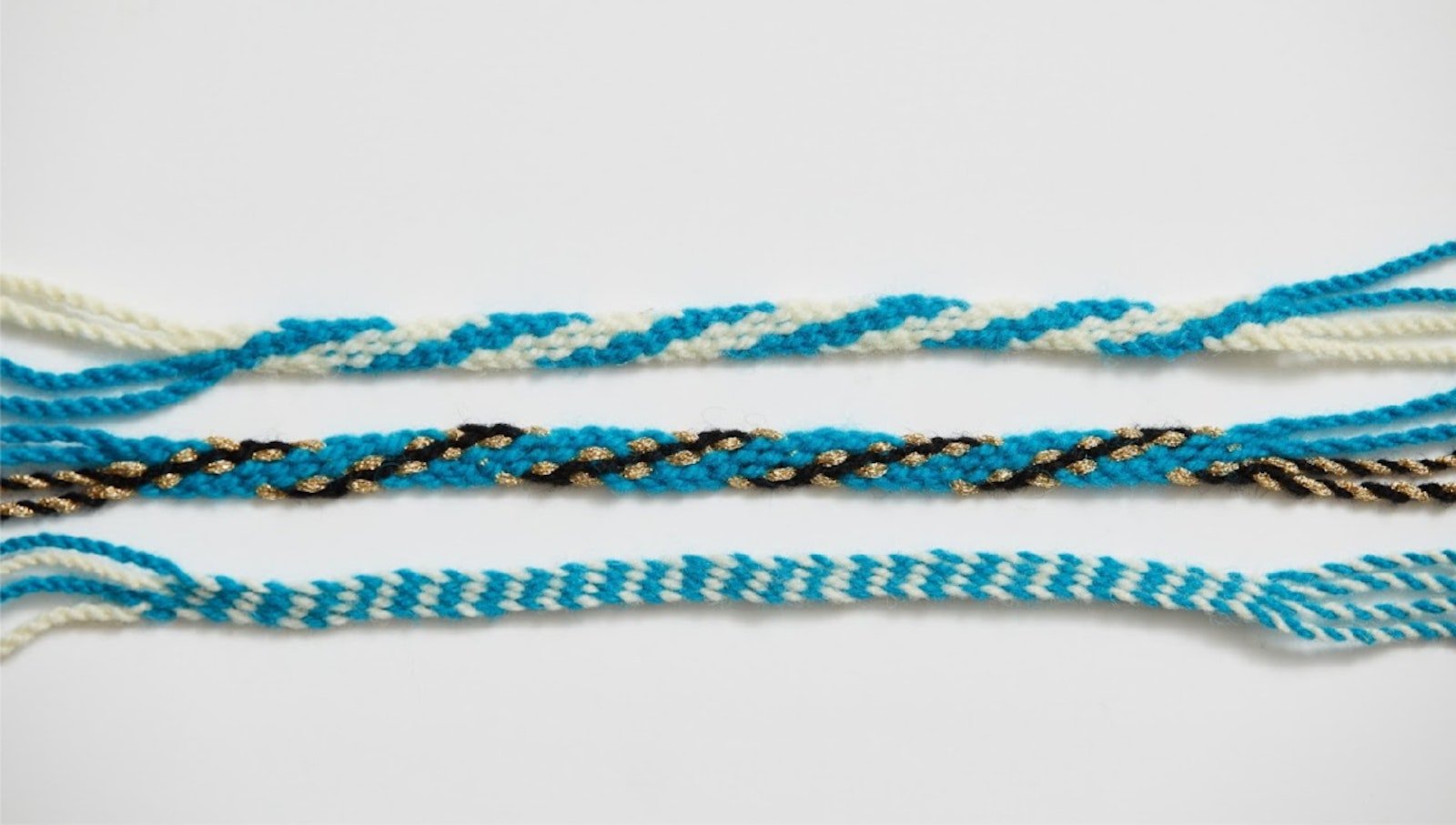Carol James spent years researching fingerweaving for her book Fingerweaving Untangled. What she found is that people in North America have been using this delightful technique to create textiles for centuries. From the traditional weaving of indigenous peoples to the Assomption sashes of Quebec, Canada, fingerweaving is beloved by many. In her simple Fingerwoven Bracelet projects from the March/April 2019 issue of Handwoven, Carol provides the perfect project for learning this fun technique. Here’s what Carol had to say about her project:
Carol James’s Fingerwoven Bracelet is the perfect beginner project for learning how to fingerweave. Photo credit: George Boe
Designer Carol James’s Statement
REGARDLESS OF YOUR PROJECT, the basics of fingerweaving are the same. You wind a warp, complete with a cross. For a weft-faced structure, starting with the end at the far right, you weave each warp end in turn across the width as weft. The weft returns to warp position at the left side.
This tutorial gives you the basics of fingerweaving with just 8 strands, but if you succeed with 8, you can succeed with 80. Using more strands will create a wider strap. The arrangement of colors and the distance each weft thread travels are what create the patterns. Once you’ve got the technique down, belts and scarves make good beginner projects. Choose a thick yarn so that the project progresses quickly. To minimize the length of the not-yet-woven warp ends, you might begin at the middle, work toward one fringe end, and then return to the middle to work toward the other fringe end.
Happy Weaving!
Christina
Project at a Glance
PROJECT TYPE: Fingerweaving
STRUCTURE: Fingerweaving
EQUIPMENT: 2 chopsticks or other similar sized sticks.
YARNS: Worsted-weight yarn (about 1,000 yd/lb).


